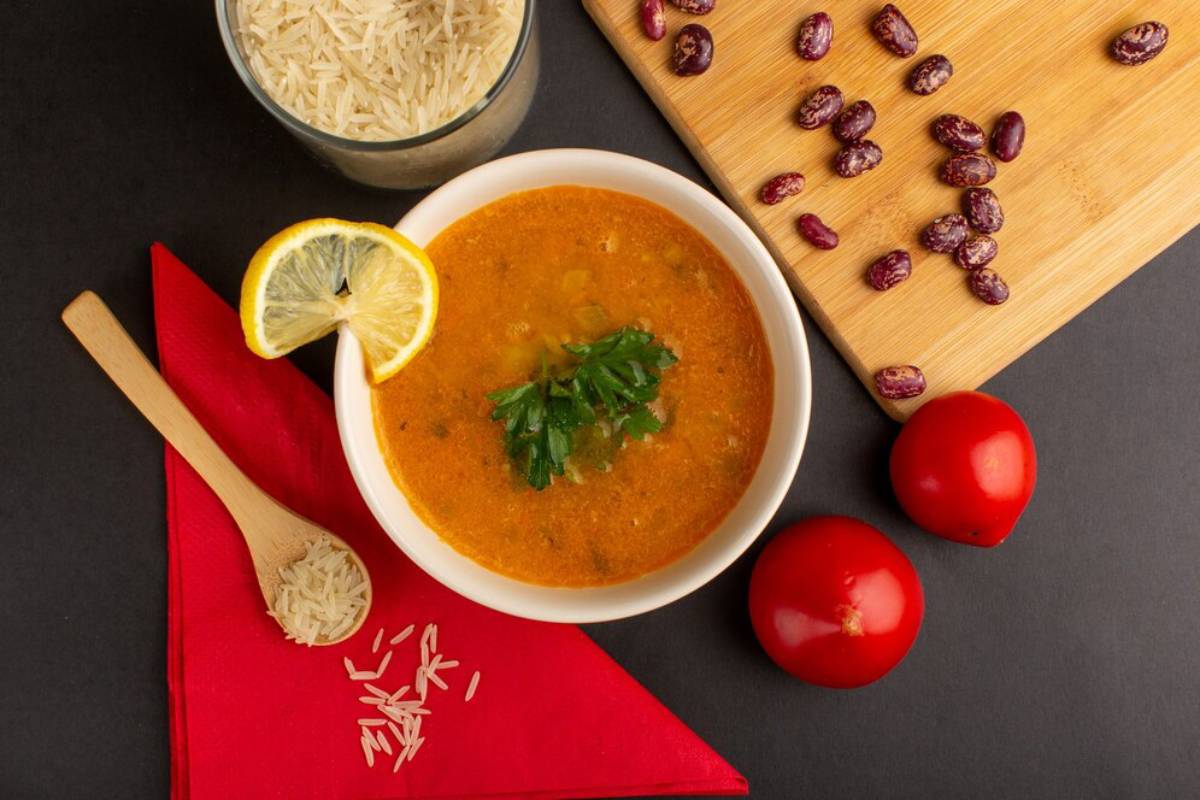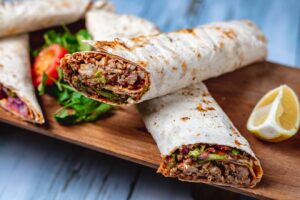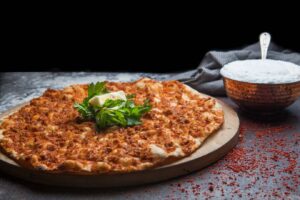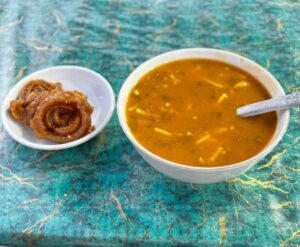The Food & Recipes Blog

Moroccan Harira Soup in Street Markets
Roaming through Morocco’s colourful street markets, you are surrounded by a concert of sights, sounds, and—most unforgettable—smells. Among the sizzling kebabs and mountains of fresh flatbreads, one dish shines with its deep aroma and warming richness: harira soup. This rich tomato-based soup, generally accompanied by dates and sweet pastries, is a culinary staple in Morocco and a national cultural phenomenon, especially during the holy month of Ramadan.
In Morocco, harira soup is much more than a meal. It represents hospitality, spiritual heritage, and people’s connection. This blog will delve into the cultural significance of harira, its place in Moroccan street food, and why its preeminence at Ramadan is so coveted. You’ll also hear about its ingredients and regional variations and how this ageless recipe remains alive and well in the busy lanes of Marrakech, Fez and more.
What is Harira Soup?
Harira soup, to its essence, is a rich, nutritious soup of tomatoes, lentils, chickpeas, and tender pieces of lamb or beef. Brightened with warming spices including cinnamon, ginger and turmeric, and thickened with flour, vermicelli, or rice, it’s a complete meal in flavour and sustenance.
Key Ingredients in Traditional Harira
- Tomatoes: Fresh or pureed, they form the base of the soup.
- Legumes: Lentils and chickpeas provide texture and protein.
- Meat: Typically lamb or beef, though vegetarian versions are standard.
- Spices: A blend of turmeric, ginger, cinnamon, and pepper.
- Herbs: Coriander and parsley for a fresh, earthy finish.
- Flour slurry: Known as taqlia, it gives the soup its signature velvety texture.
This balance of ingredients makes harira soup Morocco’s go-to comfort food — nutritious, filling, and bursting with flavour.
Harira’s Cultural and Religious Significance
Harira has an exalted status in Moroccan homes, particularly during Ramadan, the Islamic fasting month. As the day fades into night, a call to prayer announces the breaking of the fast, and most Moroccans turn to harira first.
Harira During Ramadan
- Nutritional Replenishment: After a day without food or water, harira offers an ideal balance of protein, carbs, and hydration.
- Family and Tradition: Preparing and sharing harira is a communal act, often involving multiple generations.
- Spiritual Connection: Serving harira at iftar (the evening meal) connects the spiritual and the practical, sustaining the body while nurturing faith.
In many towns and cities throughout the country — including Casablanca, Rabat and Tangier — food vendors line the streets at dusk, ladling bowls and takeaway containers with harira for those breaking their fasts, celebrating the spirit of Ramadan food culture.
The Role of Harira in Moroccan Street Food Culture
While harira is beloved in the home kitchen, it has an equally deep history in Moroccan street food. Street vendors have their versions too — some heartier, some spicier — and long lines of dedicated customers.
Street Market Highlights
- Jemaa el-Fnaa in Marrakech: One of the country’s most iconic street food hubs, where harira is often paired with boiled eggs and sticky chebakia pastries.
- Fez Medina is known for its traditional take on harira, which has strong herbal notes and a thick, stew-like consistency.
- Essaouira Port Area: Seafood lovers may find local harira versions incorporating fish stock or shellfish.
Harira’s affordability, flavour, and warmth have made it a global favourite, gaining favour from tourists and taxi drivers.
Regional Variations of Harira Across Morocco
Though the basic recipe remains consistent, regional differences in spice blends, preparation techniques, and even serving styles reveal Morocco’s culinary diversity.
Popular Variants Include:
- Marrakech-style Harira: Often thicker, with a prominent cinnamon flavour.
- Fez-style Harira: Uses rice instead of vermicelli and tends to be more herbaceous.
- Northern Coastal Harira: Incorporates seafood stock or sardines, reflecting local ingredients.
- Berber-Inspired Harira: Features barley and indigenous herbs, offering a rustic twist.
These differences reflect local ingredients, climate, and cultural influences — yet each bowl still carries the unmistakable essence of Moroccan hospitality.
Why Harira Remains a Staple in Modern Moroccan Life
Even as Moroccan cuisine evolves, harira has retained its place at the centre of culinary tradition, thanks to several enduring factors:
1. Affordability and Accessibility
Harira can be made in large batches using basic pantry staples, making it economical yet satisfying for families and street vendors.
2. Health and Nutrition

With protein from meat and legumes, vitamins from tomatoes and herbs, and warming spices that aid digestion, harira checks every box for a balanced meal.
3. Versatility
From meat-laden to vegetarian, thick or brothy, spicy or mild, harira adapts to tastes, dietary needs, and regional preferences.
4. Deep Cultural Roots
Whether served during Ramadan, at weddings, or simply as a comforting weeknight dinner, harira is tied to key life moments and memories across generations.
Making Harira at Home: A Taste of Morocco in Your Kitchen
For those inspired to recreate this dish, harira is surprisingly approachable. Many Moroccan families hand down their recipes, but here’s a simplified outline:
Basic Harira Recipe (Serves 4–6)
Ingredients:
- 250g lamb or beef, cubed
- 1 onion, finely chopped
- 2 large tomatoes, grated or pureed
- 1/2 cup lentils
- 1/2 cup chickpeas (soaked overnight)
- 1 tbsp tomato paste
- 1/4 cup chopped parsley and coriander
- 1/2 tsp turmeric, cinnamon, ginger
- Salt and pepper to taste
- 1 litre of water or broth
- 1/4 cup flour mixed with water (taqlia)
- 1/4 cup vermicelli (optional)
Method:
- Sauté meat and onions with spices in a large pot.
- Add tomatoes, lentils, chickpeas, and herbs. Simmer for 30–40 minutes.
- Stir in tomato paste and more water as needed.
- Add vermicelli and cook for another 10–15 minutes.
- Slowly add taqlia while stirring to thicken the soup.
- Serve with lemon wedges, dates, and chebakia.
Harira — More Than Just a Soup

Every steaming bowl of harira tells a story of family, tradition, faith, and flavour. As one of the most loved foods of Moroccan street food, harira helps fuel both body and spirit, particularly during the month of Ramadan, when it is served at night after daily fasting. Whether you come across it in a lively market or a quiet family home kitchen, the cosiness of harira extends well past its components.
And we invite you to dive into the abundant world of Moroccan cuisine, to sample — or better yet, cook — this archetypal soup. It’s a tasty approach to connecting with a culture that puts as much of a premium on community, hospitality and flavour.
Are you visiting Morocco soon or planning to fry Moroccan tajine at home? Start with harira. Make it yourself and tag your culinary adventure with us! Tag your creations online or comment below — we’d love to hear how your harira turned out!









